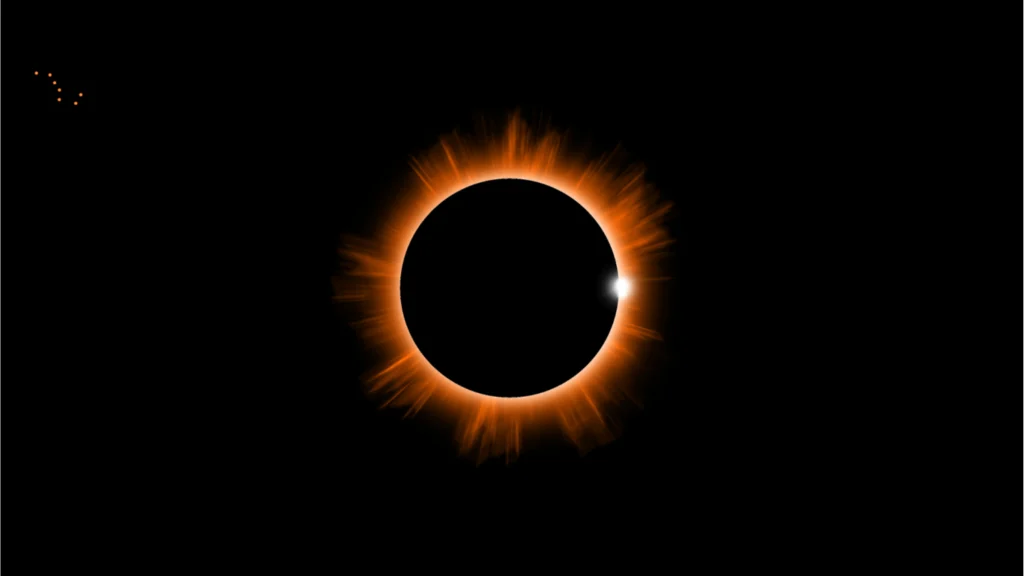Solar Eclipse: Top Destinations for 2024 Solar Eclipse

Table of Contents
Introduction to Solar Eclipses
Solar eclipses have captivated humanity for centuries, inspiring awe and wonder at the cosmic spectacle unfolding above. These rare events occur when the moon passes between the Earth and the Sun, casting its shadow on our planet and briefly obscuring the sun’s light. Each solar eclipse offers a unique viewing experience, with some eclipses being partial and others total, depending on the alignment of the celestial bodies.
What is a Solar Eclipse?
A solar eclipse occurs when the moon’s orbit intersects with the Earth’s orbit around the Sun, causing the moon to block all or part of the Sun’s light from reaching Earth. There are three main types of solar eclipses: total, partial, and annular. A total immersion is the most dramatic, where the Sun is completely obscured by the moon, turning day into night for a brief period. Partial phenomina occur when only a portion of the Sun is covered by the moon, while annular eclipses happen when the moon is too far from Earth to completely cover the Sun, leaving a ring of sunlight visible around the edges.
Significance of the 2024 Solar Eclipse
The upcoming solar eclipse in 2024 holds particular significance for astronomers and skywatchers alike. With its path of totality stretching across North America, from Mexico to Canada, this eclipse presents a rare opportunity for millions to witness this celestial phenomenon firsthand. Beyond its astronomical importance, solar eclipses have held cultural and historical significance for civilizations throughout history, often inspiring myths, legends, and rituals.
Historical Context
Throughout history, solar eclipses have been interpreted as omens or signs of impending change. Ancient civilizations, such as the Mayans and the Egyptians, carefully observed and recorded eclipses, attributing them with mystical significance. In modern times, solar eclipses continue to capture the public’s imagination, drawing tourists and scientists alike to witness this awe-inspiring event.
Astronomical Importance
From a scientific perspective, occultation offer valuable opportunities for research and observation. These rare events provide astronomers with the chance to study the Sun’s corona, the outer atmosphere that is usually obscured by the Sun’s glare. By carefully observing the corona during a total eclipse, scientists can learn more about the Sun’s magnetic field, solar flares, and other phenomena that affect life on Earth.
Factors to Consider When Choosing a Destination
When planning a trip to view the 2024 solar eclipse, there are several factors to consider to ensure an optimal viewing experience.
Accessibility
Choose a destination that is easily accessible and has adequate infrastructure for tourists. Consider factors such as transportation options, accommodation availability, and local amenities.
Weather Conditions
Check the weather forecast for potential viewing locations to maximize your chances of clear skies during the eclipse. Avoid destinations prone to cloud cover or inclement weather, as this can obstruct your view of the eclipse.
Viewing Opportunities
Research the path of totality and select a location within this zone for the best viewing experience. The path of totality is where the eclipse will be visible in its entirety, offering spectators the opportunity to witness the full spectacle of a total solar eclipse.
Top Destinations for Viewing the 2024 Solar Eclipse
Mexico: Land of Ancient Ruins and Celestial Wonders
Mexico offers a diverse range of eclipse viewing locations, from the ancient ruins of Chichen Itza to the pristine beaches of the Yucatan Peninsula. Visitors can explore Mayan archaeological sites, such as Tulum and Coba, while also enjoying the natural beauty of the Mexican coastline.
United States: The Path of Totality
The United States is set to experience a total solar eclipse along a path stretching from Texas to Maine. Prime viewing locations include cities such as Austin, Dallas, Little Rock, Indianapolis, Cleveland, Buffalo, and Burlington. Eclipse enthusiasts can also attend festivals and events organized along the path of totality, offering a unique opportunity to witness this celestial event with fellow skywatchers.
Canada: A Northern Spectacle
Canada offers breathtaking views of the solar eclipse from locations such as Toronto, Montreal, and Halifax. Spectators can experience the eclipse against the backdrop of Canada’s stunning natural landscapes, including the rugged coastline of Nova Scotia and the picturesque shores of the Great Lakes.
Greenland: A Remote Adventure
For those seeking a more remote and adventurous viewing experience, Greenland presents an ideal destination. With its vast Arctic wilderness and minimal light pollution, Greenland offers unparalleled views of the eclipse against a backdrop of glaciers, fjords, and icebergs.
Spain: Rich History and Celestial Phenomena
In Europe, Spain offers excellent opportunities for eclipse viewing, particularly in regions such as Andalusia and Catalonia. Visitors can explore Spain’s rich cultural heritage, from the historic streets of Barcelona to the sun-drenched beaches of the Costa del Sol, while also witnessing the wonder of a total solar eclipse.
Portugal: Coastal Beauty and Eclipse Viewing
Portugal’s coastline provides a stunning setting for observing the solar eclipse, with prime viewing locations in cities such as Lisbon and Porto. Visitors can soak up the sun on Portugal’s golden beaches, explore charming seaside villages, and
things to be aware of when admiring the eclipse
Protect Your Eyes
The most crucial health consideration during a solar eclipse is protecting your eyes from harmful solar radiation. Looking directly at the sun, even during an eclipse, can cause serious eye damage or even permanent blindness. Use certified solar viewing glasses or handheld solar viewers to safely observe the eclipse. These glasses are specially designed to filter out harmful ultraviolet, visible, and infrared radiation.
Avoid Looking Directly at the Sun
Even with solar viewing glasses, avoid looking directly at the sun for an extended period. Prolonged exposure to solar radiation can still pose a risk to your eyesight. Take frequent breaks and give your eyes time to rest between viewing sessions. Additionally, never use regular sunglasses, homemade filters, or unfiltered cameras, binoculars, or telescopes to look at the sun, as they do not provide adequate protection.
Protect Your Skin
While most of your attention may be focused on the eclipse itself, don’t forget to protect your skin from the sun’s intense rays. Apply a broad-spectrum sunscreen with a high SPF (sun protection factor) to any exposed skin, including your face, neck, and arms. Reapply sunscreen regularly, especially if you’ll be spending an extended period outdoors during the eclipse.
Stay Hydrated
Depending on where you’re viewing the eclipse, temperatures can vary, and the sun’s heat can be intense. To prevent dehydration and heat-related illnesses, drink plenty of water throughout the day. Bring an adequate supply of water with you to your viewing location, and avoid consuming excessive amounts of alcohol or caffeine, as these can contribute to dehydration.
Protect Your Hearing
In addition to protecting your eyes and skin, consider protecting your hearing if you’ll be attending a large eclipse viewing event or festival. Bring earplugs or noise-canceling headphones to reduce exposure to loud noises and protect your hearing from potential damage.
Be Mindful of Your Surroundings
When choosing a location to view the eclipse, be mindful of your surroundings and potential hazards. Avoid crowded or congested areas where you may be at risk of injury or accidents. Choose a safe and stable viewing spot away from traffic, steep inclines, or bodies of water.
Follow Local Guidelines and Recommendations
Finally, adhere to any local guidelines or recommendations regarding eclipse viewing. Authorities may provide specific instructions or safety tips for spectators to follow, particularly in areas experiencing high levels of eclipse activity. Stay informed and be prepared to adjust your plans accordingly to ensure a safe and enjoyable viewing experience.




